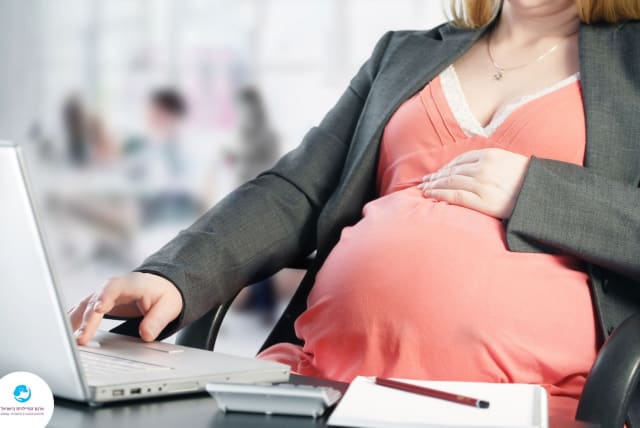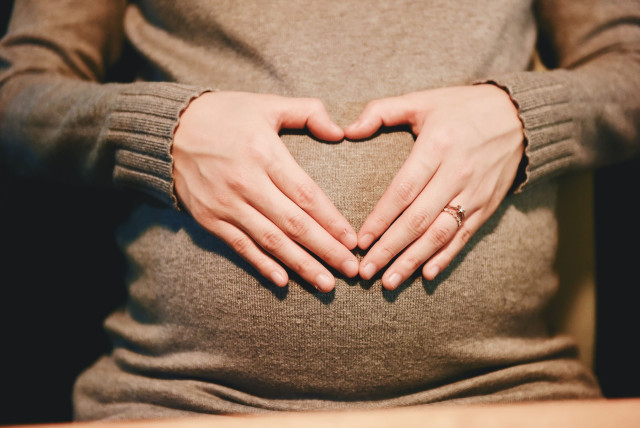Fresh food, legumes, vitamin D can help prevent preeclampsia - study

Researchers at Rambam Health Care Campus and the Technion-Israel Institute of Technology in Haifa have found some interesting ways to help prevent preeclampsia.
Preeclampsia (toxemia) is one of the most dangerous diseases for pregnant women and their fetuses that sometimes requires an early termination of pregnancy and premature birth. It may even endanger the life of the mother and fetus.
Trying to shed light on the reasons for its development and how to ways to expand the few options available today for its prevention and treatment, researchers at the Rambam Health Care Campus and the Rappaport Faculty of Medicine at the Technion-Israel Institute of Technology in Haifa have found some interesting answers that help to understand the mystery.
The study, conducted between 2019 and 2021, reviewed the dietary habits of some 600 women and examined the relationship between the development of preeclampsia and different food consumption habits and lifestyles. The research was led by Technion doctoral student Shani Abutbul-Vered under the supervision of Dr. Gila Rosen, a researcher and consultant in the field of preventive medicine and food tech; Dr. Ido Solt, director of the maternal and fetal medicine unit at Rambam; and research assistant at Rambam’s clinical nutrition department Dr. Carmit Shani Levy, in collaboration with the Carmel Diagnostics company.
How can pregnant women avoid preeclampsia?
The study examined the diet and lifestyle habits of women three months before they became pregnant (they were questioned in a food-consumption-frequency questionnaire), and later followed the results of the pregnancy, including the development of preeclampsia.
The results of the study show that women who live in a rural area increase their chances of developing preeclampsia by 4.3 times, compared to women who live in an urban area. The researchers suggested that in rural areas, pregnant women have less access to follow-up and treatment and are not diagnosed in time.
Another explanation for the findings is the explanation that the pest control of agricultural crops in rural areas may contribute to environmental pollution, which causes the development of preeclampsia among such women.
Another interesting finding arising from the results of the study is the relationship between the disease and the use of sunscreen, which was found to be a significant predictor of the development of preeclampsia. “Using sunscreen more frequently resulted in a greater chance of developing preeclampsia,” said Solt. While using sunscreen is recommended in general to reduce the risk of skin cancer, pregnant women who constantly used sunscreen increased the risk of developing preeclampsia by 77%.
“This finding is probably related to the fact that with the more widespread use of sunscreen, we block the production of vitamin D in the skin. Lack of vitamin D is linked to the development of preeclampsia,” he explained. “It is recommended for women before pregnancy to undergo a blood test to determine the amount of their vitamin D reserves, to take care of the test Vitamin D status before becoming pregnant and to take a nutritional supplement containing the vitamin, which has many advantages in terms of normal development of the pregnancy and the fetus.”
In women who consumed vitamin D and folic acid (vitamin B 12) supplements during pregnancy, their chances of developing preeclampsia decreased by 48% to 51%, Abutbul-Vered said: “This is good news for women planning a pregnancy because it is customary to take folic acid as part of the preparation process on a daily basis, although it appears that it is desirable to be careful and continue taking folic acid throughout the pregnancy.”
“As for multivitamins, the matter is a bit more complicated,” commented Rosen, who was one of the initiators of the research. “Pregnant women take them according to recommendations from friends and not always according to what they need. It is highly recommended to consult with a dietician or gynecologist involved in obstetrics about this.”
However, the more interesting finding focused on a product that exists in the pantry of every Israeli home – legumes. “We found that women who consumed more legumes (like beans and chickpeas) in their diet reduced their risk of developing preeclampsia by 49%,” said Rosen, “This is a product that we strongly recommend incorporating frequently in the daily diet, thanks to its many advantages.”
With reference to risk groups or criteria for a higher probability of developing preeclampsia, the study found that women who are overweight, their chances of developing preeclampsia increased by 24%, while among women with obesity (a body- mass index of over 30), the chances of developing preeclampsia increased by 95%. In addition, it was found that the chance of developing preeclampsia decreased by 98% in pregnant women who consumed natural, unprocessed food.
Higher levels of trans fatty acids (created during a process called hydrogenation is aimed at stabilizing polyunsaturated oils to prevent them from becoming rancid and to keep them solid at room temperature) in the diet raised the risk of preeclampsia by 4%.”
Will we soon be able to predict preeclampsia at an early stage? Carmel Diagnostics used a tool that measures levels of oxidative stress in body fluids. The level in the urine of women in the early week of pregnancy was checked with a non-invasive and convenient test, without the need for taking blood. “The premise was that the higher the level of oxidative stress, the more markers there are in the urine that probably indicate the development of preeclampsia,” concluded explains Abutbul-Vered. We found that the tool is sensitive enough to test the urine fluid, both in healthy women and in sick women in preeclampsia.”
Jerusalem Post Store
`; document.getElementById("linkPremium").innerHTML = cont; var divWithLink = document.getElementById("premium-link"); if (divWithLink !== null && divWithLink !== 'undefined') { divWithLink.style.border = "solid 1px #cb0f3e"; divWithLink.style.textAlign = "center"; divWithLink.style.marginBottom = "15px"; divWithLink.style.marginTop = "15px"; divWithLink.style.width = "100%"; divWithLink.style.backgroundColor = "#122952"; divWithLink.style.color = "#ffffff"; divWithLink.style.lineHeight = "1.5"; } } (function (v, i) { });

